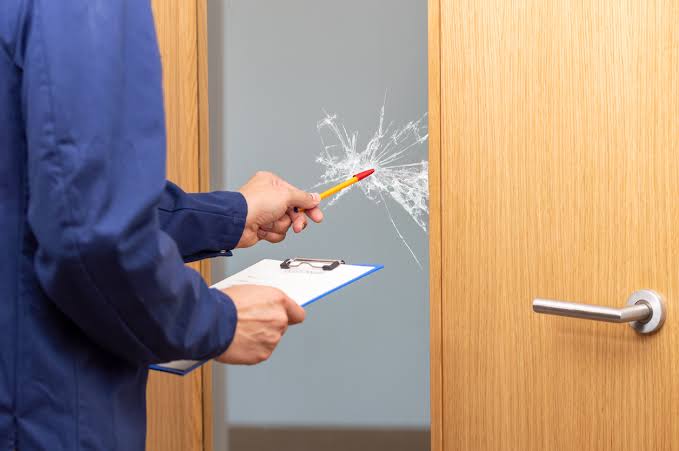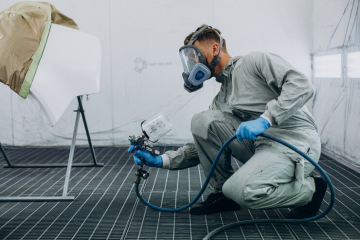Introduction
Property damage caused by natural disasters, accidents, and unforeseen events can result in significant financial loss, disruption, and emotional distress. While it is impossible to prevent all damage, taking proactive preventative measures can greatly reduce the risk and severity of property damage. This comprehensive guide explores various strategies to safeguard your property, from regular maintenance and inspections to implementing advanced technologies and emergency preparedness plans.
Importance of Preventative Measures
Financial Savings
Investing in preventative measures can save significant costs associated with repairs and restoration:
- Reduced Repair Costs: Addressing minor issues before they escalate prevents expensive repairs.
- Lower Insurance Premiums: Insurance companies may offer discounts for properties with robust preventative measures in place.
Enhanced Safety
Preventative measures contribute to a safer living and working environment:
- Preventing Accidents: Regular maintenance reduces the risk of accidents caused by structural failures or hazardous conditions.
- Health Protection: Measures like mold prevention and proper ventilation protect occupants’ health.
Peace of Mind
Knowing that your property is protected against potential damage provides peace of mind:
- Reduced Stress: Proactive measures minimize the worry associated with potential disasters.
- Quick Recovery: Preparedness plans facilitate faster and more efficient recovery in the event of damage. To minimize property damage, implementing preventive measures is crucial, especially when it comes to fire safety. One key strategy is the installation of advanced fire barrier systems, which are designed to contain fires and limit their spread. These systems significantly enhance property protection, offering peace of mind that your home or business is better prepared for unforeseen emergencies.
Regular Maintenance and Inspections
Roof Maintenance
Regular roof maintenance is essential for preventing leaks and water damage:
- Inspection and Repair: Inspect the roof at least twice a year for missing or damaged shingles, leaks, and signs of wear. Promptly repair any issues.
- Gutter Cleaning: Clean gutters and downspouts regularly to prevent water buildup and ensure proper drainage.
- Flashing and Seals: Check and maintain roof flashing and seals around chimneys, skylights, and vents to prevent water intrusion.
Plumbing System Maintenance
Proper maintenance of plumbing systems prevents leaks and water damage:
- Regular Inspections: Inspect pipes, faucets, and fixtures for leaks, corrosion, and signs of wear. Replace or repair damaged components.
- Water Pressure: Monitor and maintain appropriate water pressure to prevent pipe damage and leaks.
- Insulation: Insulate exposed pipes to prevent freezing and bursting during cold weather.
HVAC System Maintenance
Maintaining your HVAC system ensures efficient operation and prevents damage:
- Regular Servicing: Schedule annual HVAC system inspections and servicing by a professional technician.
- Filter Replacement: Replace HVAC filters regularly to maintain air quality and system efficiency.
- Duct Cleaning: Clean air ducts periodically to remove dust, debris, and mold buildup, with the help of ‘vent cleaning near me‘.
Electrical System Maintenance
Proper maintenance of electrical systems prevents fires and electrical hazards:
- Professional Inspections: Schedule regular inspections by a licensed electrician to identify and address potential issues.
- Outlet and Switch Checks: Inspect outlets and switches for signs of damage, such as scorch marks or loose connections.
- Circuit Breakers: Test and maintain circuit breakers to ensure they function correctly and prevent overloads.
Foundation and Structural Maintenance
Maintaining the foundation and structural integrity of your property is crucial for preventing severe damage:
- Crack Inspection: Inspect the foundation, walls, and ceilings for cracks and address them promptly to prevent further deterioration.
- Waterproofing: Apply waterproof coatings to basements and foundations to prevent water intrusion and damage.
- Landscaping: Ensure that landscaping around the property slopes away from the foundation to direct water away from the building.
Advanced Technologies for Property Protection
Smart Home Systems
Smart home technologies offer advanced protection and monitoring capabilities:
- Leak Detection Sensors: Install smart leak detection sensors that alert you to water leaks and potential flooding.
- Temperature and Humidity Monitors: Use smart monitors to track temperature and humidity levels, preventing mold growth and maintaining optimal conditions.
- Security Systems: Integrate smart security systems with cameras, motion detectors, and alarms to protect against theft and vandalism.
Fire Protection Systems
Advanced fire protection systems can significantly reduce the risk of fire damage:
- Smoke Alarms: Install smoke alarms on every level of the property and test them regularly to ensure they function properly.
- Sprinkler Systems: Consider installing automatic sprinkler systems that activate in the event of a fire to suppress flames and limit damage.
- Fire Extinguishers: Keep fire extinguishers readily accessible in key areas, such as the kitchen, garage, and near fireplaces.
For added security in fire prevention, consider working with a professional service like Fast Fire Watch Guards go to https://fastfirewatchguards.com/arizona/, especially if you’re in Arizona, to ensure that your property is protected even when fire systems are under maintenance or repair.
Flood Protection Measures
Implementing flood protection measures can safeguard your property from water damage:
- Sump Pumps: Install sump pumps in basements and low-lying areas to remove excess water and prevent flooding.
- Flood Barriers: Use flood barriers, such as sandbags or temporary flood panels, to protect entry points during heavy rains or flooding.
- Elevated Appliances: Elevate appliances and electrical systems above potential flood levels to prevent damage.
By putting these flood protection measures in place, you’re taking proactive steps to protect your property from potential water damage. However, in severe weather events like hurricanes, even the best precautions may not prevent all water intrusion. In these cases, timely hurricane water damage restoration is essential. This type of restoration not only repairs the immediate damage but also addresses potential long-term issues like mold and structural weakness caused by extensive water exposure. Investing in both preventive measures and a reliable restoration plan can ensure your property is well-prepared and resilient against future flooding.
Storm-Resistant Construction
Building or retrofitting properties with storm-resistant features enhances resilience:
- Impact-Resistant Windows: Install impact-resistant windows and doors to protect against wind and debris during storms.
- Reinforced Roofing: Use storm-resistant roofing materials and secure roof structures to withstand high winds.
- Storm Shutters: Install storm shutters to protect windows and glass doors from wind and debris impact. Implementing preventative measures to reduce property damage is essential for maintaining safety and minimizing financial loss. One effective strategy is ensuring that high-risk areas, such as gas storage, are protected with advanced systems like jet blast fire protection. These systems are specifically designed to shield critical infrastructure from potential fire hazards, providing a crucial layer of security for valuable assets and preventing widespread damage in the event of a fire.
Emergency Preparedness Plans
Creating an Emergency Plan
Having a well-developed emergency plan is crucial for responding effectively to disasters:
- Evacuation Routes: Identify and practice evacuation routes from each room in the property.
- Emergency Contacts: Maintain a list of emergency contacts, including family members, neighbors, and local authorities.
- Meeting Points: Establish safe meeting points outside the property where occupants can gather after evacuating.
Assembling an Emergency Kit
An emergency kit provides essential supplies during and after a disaster:
- Basic Supplies: Include items such as water, non-perishable food, first aid supplies, flashlights, batteries, and a multi-tool.
- Personal Items: Pack important documents, medications, personal hygiene items, and clothing.
- Communication Devices: Ensure you have a fully charged mobile phone, battery-powered radio, and spare batteries.
Conducting Regular Drills
Regular drills help ensure that all occupants are familiar with the emergency plan:
- Fire Drills: Conduct fire drills at least twice a year to practice evacuation procedures.
- Severe Weather Drills: Practice drills for severe weather events, such as tornadoes or hurricanes, to ensure everyone knows where to seek shelter.
- Review and Update: Regularly review and update the emergency plan and kit based on feedback from drills and changing needs.
Community and Professional Resources
Community Resources
Leverage community resources to enhance your preparedness and response capabilities:
- Local Authorities: Stay informed about local emergency management plans and resources provided by local authorities.
- Community Organizations: Participate in community organizations and neighborhood watch programs that promote safety and preparedness.
- Public Alerts: Sign up for public alert systems to receive timely notifications about emergencies and severe weather events.
Professional Services
Engaging professional services can provide expert guidance and support for preventative measures:
- Restoration Companies: Partner with reputable restoration services in Yuma, AZ for regular inspections, maintenance, and emergency response planning.
- Insurance Agents: Work with your insurance agent to ensure adequate coverage and understand policy details related to property damage.
- Contractors and Inspectors: Hire licensed contractors and inspectors for specialized maintenance and repairs to ensure compliance with building codes and safety standards.
Case Studies: Successful Preventative Measures
Case Study 1: Flood Prevention in a Coastal Home
A coastal homeowner implemented several flood prevention measures, including installing a sump pump, elevating appliances, and using flood barriers. During a severe storm, these measures effectively prevented flooding and minimized water damage, saving thousands in potential repair costs.
Case Study 2: Fire-Resistant Construction in a Wildfire-Prone Area
A homeowner in a wildfire-prone area retrofitted their property with fire-resistant roofing, impact-resistant windows, and an automatic sprinkler system. When a wildfire threatened the area, these measures significantly reduced fire damage and protected the property.
Case Study 3: Smart Home Technology for Leak Detection
A commercial building owner installed smart leak detection sensors throughout the property. When a pipe burst overnight, the sensors alerted the owner, allowing for immediate response and minimizing water damage.
The Future of Preventative Measures
Technological Advancements
Emerging technologies promise to further enhance preventative measures:
- Artificial Intelligence (AI): AI can analyze data from various sensors and systems to predict potential issues and optimize preventative strategies.
- Internet of Things (IoT): IoT devices can provide real-time monitoring and control of home systems, improving response times and reducing risks.
- Drones: Drones can be used for aerial inspections and monitoring, providing detailed images and data without the need for extensive physical inspections.
Regulatory Changes
As awareness of the importance of preventative measures grows, regulatory changes are likely to impact property management:
- Building Codes: Updated building codes may require the use of more resilient materials and construction practices.
- Insurance Incentives: Insurance companies may offer greater incentives for properties with robust preventative measures in place.
Industry Collaboration
Collaboration within the industry can drive widespread adoption of preventative measures:
- Partnerships: Partnerships between restoration companies, technology providers, and insurance companies can promote the development and use of advanced preventative measures.
- Knowledge Sharing: Sharing best practices and success stories can encourage other property owners to adopt similar measures.
Conclusion
Preventative measures are essential for minimizing property damage and ensuring the safety and well-being of occupants. Regular maintenance and inspections, advanced technologies, emergency preparedness plans, and leveraging community and professional resources are key strategies for protecting your property. By taking proactive steps and staying informed about emerging trends and technologies, property owners can significantly reduce the risk and impact of disasters, ultimately saving time, money, and stress. Embracing preventative measures not only safeguards your property but also provides peace of mind and enhances the overall quality of life.



